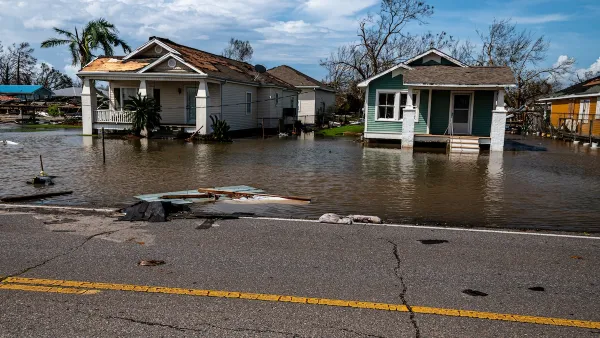The booming production and use of cement is the single largest material contributor to climate change.
"In booming economies from Asia to Eastern Europe, cement is the glue of progress. The material that binds the ingredients of concrete together, cement is essential for constructing buildings and laying roads in much of the world."
"Some 80 percent of cement is made in and used by emerging economies; China alone makes and uses 45 percent of global output. Production is doubling every four years in places like Ukraine."
"But making cement creates pollution, in the form of carbon dioxide emissions, and the greenest of technologies can reduce that by only 20 percent."
"Cement plants already account for 5 percent of global emissions of carbon dioxide, the main cause of global warming."
"Compounding the problem, cement has no viable recycling potential, as the abandoned buildings that line roads from Tunisia to Mongolia demonstrate. Each new road, each new building, needs new cement."
"Worse yet, green incentives may be allowing the industry to pollute even more. The European Union subsidizes Western companies that buy outmoded cement plants in poor countries and refit them with green technology."
"The emissions per ton of cement produced do go down. But the amount of cement produced often goes way up, as does the pollution generated."
FULL STORY: In booming economies, cement is crucial for growth but an enemy of green

Planetizen Federal Action Tracker
A weekly monitor of how Trump’s orders and actions are impacting planners and planning in America.

Vehicle-related Deaths Drop 29% in Richmond, VA
The seventh year of the city's Vision Zero strategy also cut the number of people killed in alcohol-related crashes by half.

As Trump Phases Out FEMA, Is It Time to Flee the Floodplains?
With less federal funding available for disaster relief efforts, the need to relocate at-risk communities is more urgent than ever.

Public Lands Are Safe — For Now
A proposal to sell off federally owned lands was removed from the Republican spending bill on procedural grounds.

Hundreds of New Yorkers Hospitalized Due to Extreme Heat
A brutal heat wave is causing hospitalizations for heat-related illnesses, an increasingly common threat as summers get warmer.

Opinion: Illinois Transit Bill Could Revolutionize Intercity Travel
A bill passed by the state’s General Assembly would create a permanent source of dedicated funding for intercity rail.
Urban Design for Planners 1: Software Tools
This six-course series explores essential urban design concepts using open source software and equips planners with the tools they need to participate fully in the urban design process.
Planning for Universal Design
Learn the tools for implementing Universal Design in planning regulations.
JM Goldson LLC
Custer County Colorado
Sarasota County Government
City of Camden Redevelopment Agency
City of Astoria
Transportation Research & Education Center (TREC) at Portland State University
Camden Redevelopment Agency
City of Claremont
Municipality of Princeton (NJ)


























